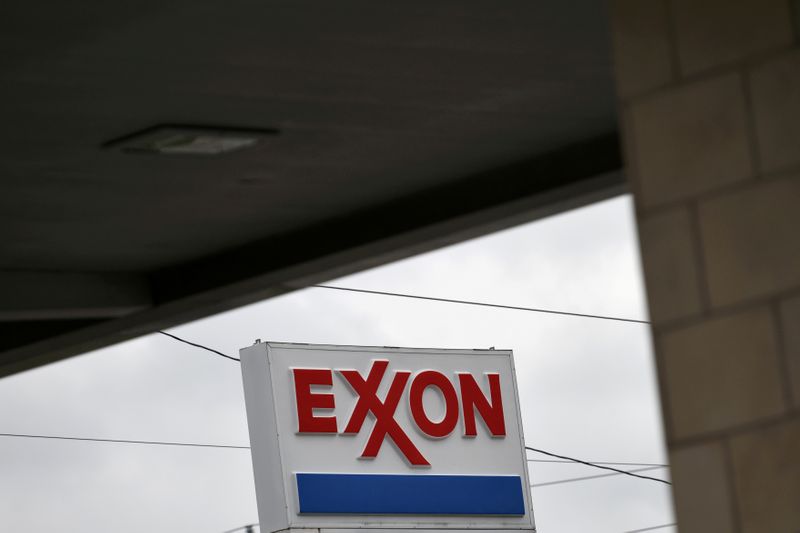(Reuters) – The U.S Securities and Exchange Commission has launched an investigation of Exxon Mobil Corp following a whistleblower complaint that the oil major over-valued a key asset in the top U.S. shale field, the Wall street Journal reported on Friday.
Exxon Chief Executive Darren Woods has pinned much of the company’s growth prospects on the Permian Basin in Texas and New Mexico, and two years ago pitted the company against rival Chevron Corp in a race to reach 1 million barrels of oil and gas per day in the field. The Exxon target grabbed the spotlight on the day Chevron was meeting with investors and analysts to make its own Permian case.
Woods told investors that Exxon could earn a double-digit returns in the Permian, even at $35-per-barrel oil.
Exxon shares were down 4% at $48.29 in midday trading.
Several people involved in valuing the Exxon Permian asset during an internal assessment in 2019 said employees were being forced to use unrealistic assumptions about how quickly the company could drill wells there to arrive at a higher value, the report said. (https://on.wsj.com/2LzpVjX)
“Actual and provable performance exceeded drilling plans for the Permian, and such performance has been accurately represented to the investment community,” Exxon spokesman Casey Norton told Reuters on Friday via email. “Historically, the company’s unconventional drilling performance has increased in short timeframes as engineers and planners gather more data in basins across its portfolio.”
The SEC did not immediately respond to Reuters requests for comment.
“It does not surprise me that there may have been some pressure to inflate assumptions in the Permian,” said Biraj Borkhataria, analyst with RBC Capital Markets. “Over the last few years there was clearly an incentive for many companies to make that play look as attractive as possible.”
Some Exxon managers in 2018 had initially pegged the net present value of the Delaware Basin in Permian at about $60 billion, the Journal reported in September. But a few employees involved in Exxon’s annual development planning estimated the value was closer to $40 billion in 2019.
When employees delivered the new number, they were asked to “claw back” some of the lost value by using different assumptions, including a more optimistic “learning curve” that estimated the rate at which they would improve drilling times, the WSJ report said, citing the whistleblower complaint.
Some employees objected to using the new learning curve, which they viewed as unrealistic, it said. The value was ultimately adjusted to about $50 billion, the report added.
At least one employee who complained was fired last year, the WSJ said, citing a person familiar with the matter.
The largest U.S. oil producer posted losses in the first three quarters of 2020 on an ill-timed spending increase that collided with a downturn in fuel demand and prices. To cope, the company has cut employees and project spending.
Exxon slashed 2020 spending in the Permian to about $3 billion from an original $7.4 billion budget, and said it would cut the number of drilling rigs working there from 55 to 15 or fewer.
Last month, Exxon also signaled a writedown of up to $20 billion, mostly related to its natural gas properties.
(Reporting by Jennifer Hiller and Rithika Krishna; Editing by Shinjini Ganguli and Dan Grebler)























